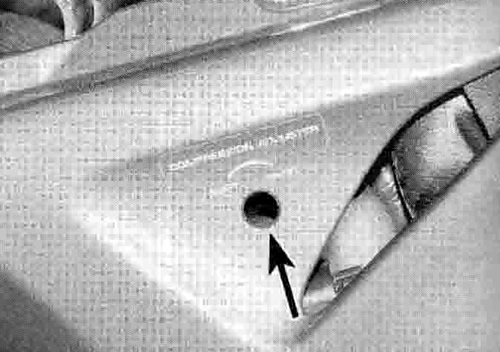Front forks
1. On XRV750-L to S (1990 to 1995) models only, the forks are air-assisted arid the air pressure can be varied within the specified range (see Specifications). The air valve is incorporated in the top bolt of each fork.
2. To check the air pressure use a gauge which is suitable for reading low pressures: do not use a tyre pressure gauge. Gauges and hand-operated pumps are available for suspension system use.
3. Ensure that all weight is off the front suspension when the air pressure is checked. Place the motorcycle on an auxiliary stand so that the front wheel is off the ground. Take care not to increase air pressure beyond the range - excess pressure will damage the fork oil seals - and ensure that the pressure in both forks is equal.
Rear shock absorber
Spring pre-load - all models
4. Slacken the adjuster lockring using a suitable G-spanner (see illustration). Now thread the adjuster up or down as required, again using the C-spanner - thread it up to decrease pre-load or lower the ride height, and down to increase pre-load or raise the ride height.

13.4. Slacken the locknut (A) and turn the adjuster (B) as required
5. Make sure you stay within the adjustment limits as defined by the installed length of the spring according to the Specifications at the beginning of the Chapter. Tighten the locknut securely against the adjuster on completion.
Compression damping - XL650V models
6. Adjustment is made using a flat bladed screwdriver via the aperture in the left-hand side panel (remove the side panel for improved access - see Chapter 8) (see illustration). Turn the adjuster clockwise to increase damping for a firmer ride, and turn it anti-clockwise to reduce damping for a softer ride.

13.6. On XL650V models, adjust compression damping via the aperture (arrowed)
7. To set the damping at the standard (factory set) amount, turn the adjuster clockwise until it lightly seats (do not force it), then turn it anticlockwise approximately one full turn until the punch marks on the adjuster and the reservoir body are aligned - remove the side panel (see Chapter 8) to make the punch marks easier to see.
